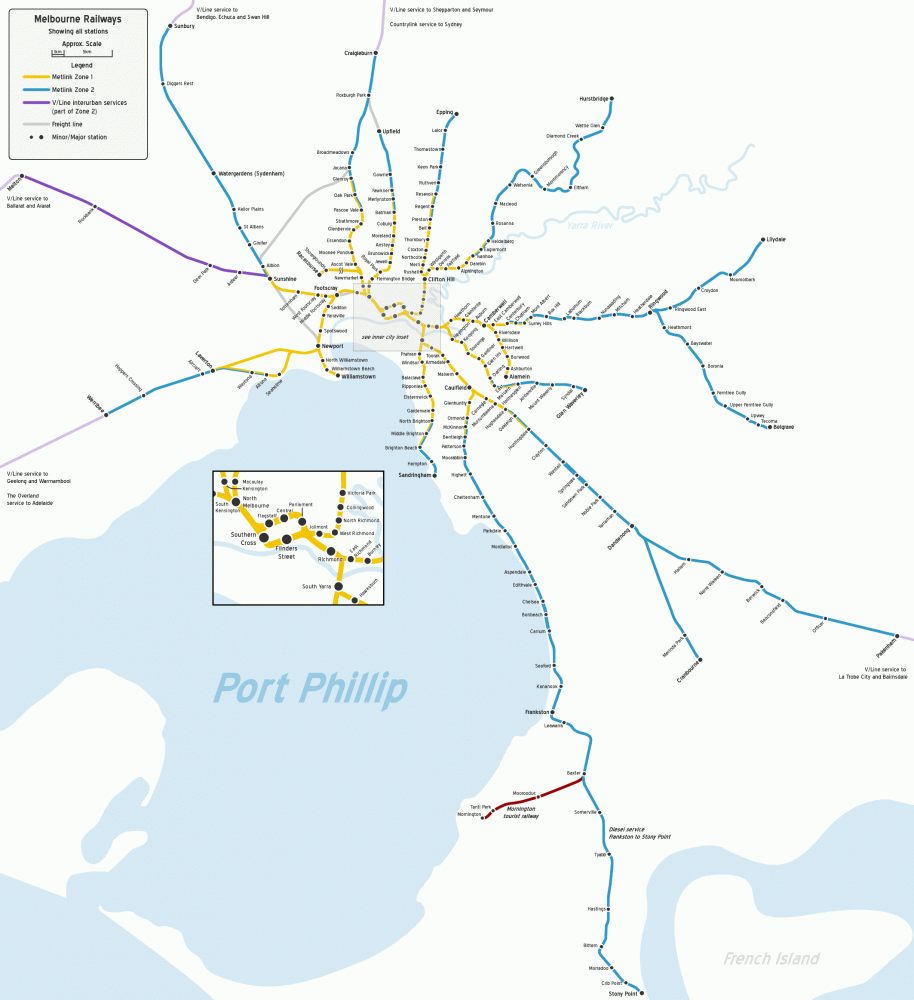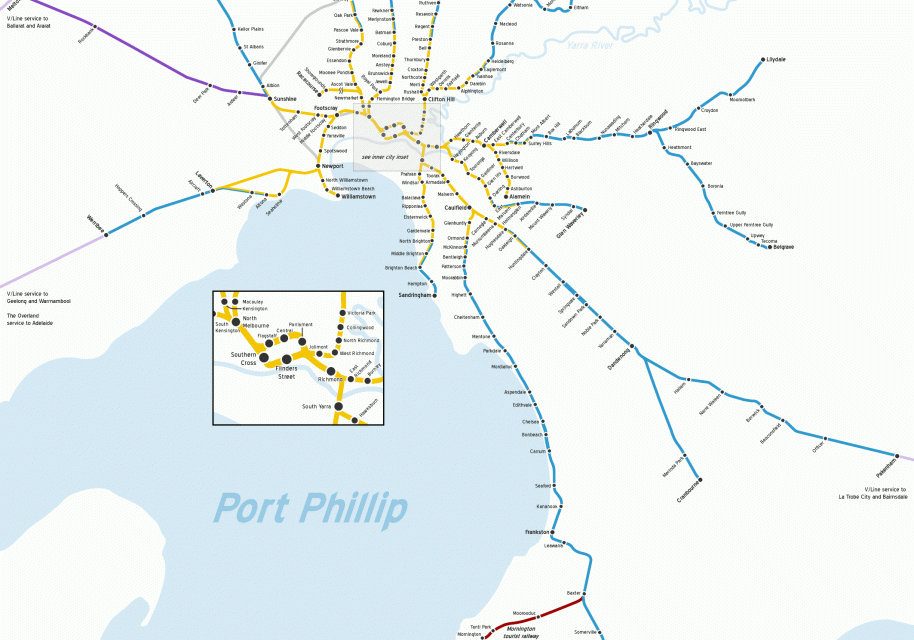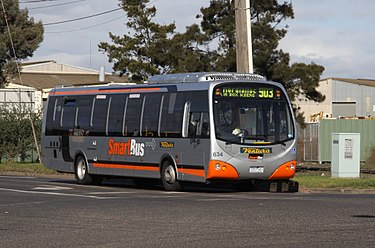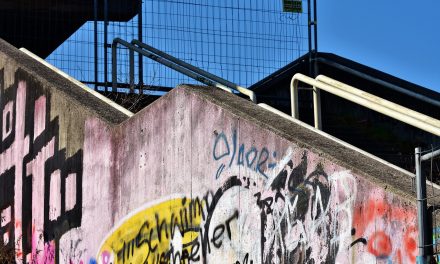Table 1: Comparison between Melbourne and Singapore Train Network
Data obtained from Wikipedia (Melbourne, Singapore)
| Melbourne | Singapore | |
| First rail line operated in | 1854 | 1987 |
| Model | Commuter Rail | Rapid Transit |
| Train Operator(s) | Metro Trains Melbourne | SMRT & SBS Transit |
| Annual Passenger Trips | 213.9 million (2008-2009) | 712.48 million (2009) |
| Operating Hours | 5am-midnight | 5.30-1 am |
| Train Frequencies | 9-40 min (Ref 1) | 3-8 min |
| Current No. of Lines | 16 | 4 MRT (Mass Rapid Transit) Lines & 3 LRT (Light Rail Transit) Lines |
| Length of Electrified Lines | 372 km | 129.7 km MRT & 28.8 km LRT 278 km by 2020 (Ref 2) |
| No. of Train Stations | 200 | 108 |
| Last Completed Line | Glen Waverley Line in 1930 (Ref 3) |
Circle Line Stage 3 opened on 28/5/09. Stage 1 & 2 opened on 17/4/2010. Stage 4 & 5 scheduled to open in 2011 |
| Planned Lines | Regional Rail Link Melbourne Metro (Both have unknown status) |
Downtown Line (under construction) Thomson Line (To complete in 2018) Eastern Region Line (To open in 2020) |
You can see from the above table that Melbourne has a much larger system, with 372 km of electrified lines and 200 train stations. Singapore currently has 138 km of rail lines which will be doubled to 278 km by 2020 (Ref 4, 5). Based on the information from Wikipedia, Melbourne’s system is said to be based on the Commuter Rail Model while I presume Singapore’s system uses the Rapid Transit Model. I am not completely sure of the differences between the two models. According to my understanding, the Commuter Rail Model focuses on travel between a city centre and outer suburbs, with tickets usually priced by zones that are determined by the distance from the city centre. The economic activities of Melbourne are largely concentrated in the CBD while Singapore does have several regional centres that support substantial level of employment and which help to spread out the passenger volume away from the CBD.
Compared to rapid transit, commuter rail serves lower density areas and often shares the same tracks as intercity or freight trains. There are fewer stations spaced further apart. The trains run at lower frequency on a schedule, with more services during peak hours. Some services operate only during peak hours. There may be express services which skip some stations in order to run faster. In Singapore, trains do not follow a fixed timetable, stop every station and run every 3-8 minutes.
The transport industry in Melbourne has been talking much about the concept of Metro, which was explained by Andrew Lezala, the chief executive of Melbourne train operator Metro as follows: ”passengers will not really need to understand the timetable. They can turn up and know that within X minutes they will get a train and that those trains will run reliably to time, generally stop at most stations and have a high capacity.” Among the 30 most populous cities in the developed world, only six are without metro-style services and these include Melbourne, Sydney, Dallas, Houston, Detroit and Phoenix (Ref 6).
Map 1 and 2 below show the train networks in Melbourne and Singapore respectively.
Click on the map below to enlarge it. Click another time to return to this page.

Map 1: Melbourne Train Network by John Shadbolt
As shown by the above map, the Melbourne train network is a radial one, with the lines radiating from the City Loop. In Singapore, the North-South Line NSL (red) and East-West Line EWL (green) were the first lines to be built in 1987. During that period, the NSL ended at Yio Chu Kang Station in the north while the EWL branched north to Choa Chu Kang Station from Jurong East Station near its western end. Yio Chu Kang was joined to Choa Chu Kang in 1996 to complete a loop in what is called the Woodlands Extension, which added 6 more stations in between. It is interesting to learn that the timing of this extension may be due to political considerations (Ref 7). It was accorded a higher priority compared to the more densely-populated northeast area that had 2 opposition MPs. It was also revealed a decade after the extension was built that the Malaysian government would agree moving its train station away from its CBD location in Singapore only if the MRT line is extended to Woodlands (Ref 8). The Northeast Line NEL (purple) was added to the network in 2003, followed by the Circle Line CCL (yellow) in 2009. The NEL was among the first fully-automated heavy rail lines in the world. Both the NEL and CCL had construction and budget problems (Ref 9, 10).
The Circle Line allows for trans-orbital travel and connects the lines radiating out of the city centre, thereby allowing passengers to bypass downtown stations, reducing congestion there and cutting down on commuting time. In Melbourne, if you wish to get from Broadmeadows to Epping by train alone, you have to first travel to the City Loop despite the short direct distance between the two stations. It will be more convenient for you to take a bus or drive. Melbourne did have an Inner Circle Line, an Outer Circle Line as well as other interconnecting lines but these were closed, dismantled and replaced by shuttle bus services, due to low usage and building of new lines. What Melbourne has now are just radial lines. Some lines were modified. For example, the St Kilda Line and Port Melbourne Line were converted to run tram services.
Click here to see a larger map
Map 2: Singapore Train Network embedded from SMRT Website
Table 2: Train Lines in Singapore
| Line | Line Length | No. of Stations | Cost | Operational Date |
| North South Line (NSL) | 44 km | 25 | S1 | 7/11/1987 |
| NSL: Woodland Extension | 16 km | 6 | S$1.2 bil | 10/02/1996 |
| NSL: Marina Pier Station Extension | 1 km | 1 | $357.5 mil | 2014 |
| East West Line (EWL) | 49.2 km | 35 | S2 | 12/12/1987 |
| EWL: Dover Station added | 1 | S$55 mil | 18/10/2001 | |
| EWL: Changi Airport Extension | 6 km | 2 | S$750 mil | 8/02/2002 |
| EWL: Boon Lay Extension (BLE) | 3.8 km | 2 | S$436 mil | 28/02/2009 |
| EWL: Tuas West Extension | 8 km | 4 | S$3.5 bil | 2016 |
| EWL: Tuas South Extension | 6 km | 2 | ? | 2025 |
| North East Line (NEL) | 20 km | 16 | S$4.6 bil | 20/06/2003 |
| Circle Line (CCL) | 35.7 km | 31 | S$10 billion | 28/05/09 (Stage 3) 17/04/10 (Stage 1, 2) 2011 (Stage 4, 5) 2012 (Marina Bay Extension) |
| Downtown Line (DTL) | 42 km | 34 | S$12 bil | 2013 (Stage 1) 2015 (Stage 2) 2017 (Stage 3) |
| Thomson Line (TSL) | 30 km | 23 | S3 | 2018 |
| Eastern Region Line (ERL) | 21 km | 12 | S4 | 2020 |
| Rapid Transit System (RTS) Link | 1.5km tunnel Rail? |
Republic | ? | 2018 |
As you can see from the above table, it took S$5 billion to construct two major lines NSL and EWL in the 80s. This has ballooned to S$20 billion required for the shorter Thomson and Eastern Region lines, whose constructions are to commence soon. Part of the cost increase can be accounted probably by more underground train stations and tunnels in the new lines. But I guess the majority of the cost increase is due to labour, materials and inflation. One reason why Melbourne is able to have such a vast network is because the majority of the tracks and stations were built when everything was cheaper. S$5 billion was considered a huge sum of money when the Singapore government decided to take the plunge into building a train system rather than a bus system to serve the island state. This is considered a value investment from today’s perspective and has laid the foundation for justifying building the later lines. Any delay in essential rail expansion would only result in increasingly costly bills.
The Singapore Government has committed S$60 billion over the next 10 years on improvements to the rail network to ease congestion (Ref 11). There are 4 new lines (CCL, DTL, TSL and ERL) in various stages of construction and planning. By 2020, there will be a train station every 400m or within 5 minutes’ walk in the city. Its network density will increase from 31km per million residents today to 51km per million, surpassing what Hong Kong and Tokyo has today (Ref 12, 13, 14). The network length will be doubled from the current 138km to 278km of tracks in 2020, capable of carrying 3 times as many journeys, rising from today’s 1.4 million a day to 4.6 million (Ref 15).
The announcement of the Thomson and Eastern Region Lines’ routes took analysts by surprise, for the Thomson Line runs from Woodlands to Marina Bay, very similiar to the NSL and the Eastern Region Line mirrors the eastern portion of the EWL. Assistant Professor Terence Fan of the Singapore Management University pointed out that such a radical solution of having closely-running parallel lines to solve congestion problems are not without precedents for they can be seen in New York, London and Hong Kong (Ref 16).
Singapore has reached an agreement with Malaysia to extend the Thomson Line into Johor, connecting Singapore to Tanjung Puteri, which is near the Johor end of the Causeway. This link which is called the Rapid Transit System (RTS), should be up and running by 2018, as agreed by the Singapore-Malaysia Joint Ministerial Committee for Iskandar Malaysia (Ref 17, 18, 19, 20, 21).
Table 3: Train Projects in Melbourne
| Line/Stations | Line Length | No. of Stations | Cost | Operational Date |
| Broadmeadows to Cragieburn Rail Electrification |
10 km | A$115 mil | 30/09/2007 | |
| Cranbourne Station Upgrade | A$37 mil | 2009 | ||
| North Melbourne Station Upgrade | A$39 mil | Nov-09 | ||
| Laverton Rail Upgrade | 1 km | A$92.6 mil | 2010 | |
| Second Track between Clifton Hill & Westgarth on Hurstbridge Line |
750 m | A$52 mil | 2010 | |
| Coolaroo Station added to Craigieburn Line | 1 | A$36 mil | 6/06/2010 | |
| Westall Rail Upgrade Project | 1 | A$153 mil | 2011 | |
| Lynbrook Station on Cranbourne Line | 1 | M1 | 2011 | |
| Cardinia Rd Station on Pakenham Line | 1 | M2 | 2011 | |
| Williams Landing Station on Werribee Line | 1 | M3 | 2012 | |
| Caroline Springs Station on Melton Line | 1 | M4 | TBC | |
| Sunbury Line Electrification | A$270 mil | 2012 | ||
| Extension from Epping to South Morang | 3.5 km | 1 | A$650 mil | 2013 |
| Regional Rail Link | 47 km | 8 (2 new) | A$5.18 bil | Late 2014 |
| Melbourne Metro | 17 km | 8 (5 new) | A$4.5 bil (Stage 1) | 2018 (Stage 1) |
In Melbourne, only Parliament, Melbourne Central and Flagstaff stations are underground. The rest are at ground or near ground level. In contrast, only a few Singapore train stations are at ground level. Singapore train stations and tracks are mostly either underground or high above ground, supported on pillars. You will need to take an escalator or elevator to reach the platforms from the concourse. Most Melbourne stations are pretty bare, comprising of open-air platforms, a small roofed area for pedestrians and perhaps an office and toilets. Rains are frequent and heavy in Singapore. Hence, all Singapore stations are fully-covered and all MRT stations are manned and have faregates, escalators, elevators, ticketing machines, CCTVs, LED and plasma displays, payphones, toilets and an air-conditioned passenger service room (Ref 22). Most stations have ATMs and automated self-service kiosks for a myriad of services as well as commercial spaces set aside for supermarkets, convenience stores, etc. On account of its complexity, structure and function, a Singapore train station would require far more materials and labour to build compared to a typical Melbourne station.
The Regional Rail Link and Melbourne Metro, which were the flagship transport projects of the Brumby Government, may now be scaled down, deferred or dumped, due to cost blowouts and possible reduced funding from the Federal Government (Ref 23, 24, 25, 26). There is a popular Melbourne’s advice that one should not buy a house based on the promise (even if it is official) that rail and train station will be built to serve the area. Here is a long list of proposals for new rail lines, extensions and electrification to existing lines and new stations on existing lines, that have been put forwards by various groups. Some of these plans were so seriously considered that they had appeared in the Melway street directory and on suburban train destination rolls. A classic example is the Doncaster Line, which has been on and off the radar since 1890. The Eastern Railway Construction Act, together with the route, was passed by the State Parliament in December 1971 but without completion date. The State Government had set aside land for the railway, with a brief construction work at the Victoria Park end of the line from 1974 to 1975 but had subsequently sold the reserved land (Ref 27). The Victorian Liberal Party had said in its 2010 election promise that it will commit $6.5m to undertake another study to develop a route for building the Doncaster Line (Ref 28).
One major difference between Australia and Singapore is that once the Singapore government announces a project, you can be assured that the project will proceed and be completed. The Melbourne rail network had expanded rapidly during its early years but had stagnated in inertia in recent times. I would say that the future of rail developments in Melbourne is not rosy.





